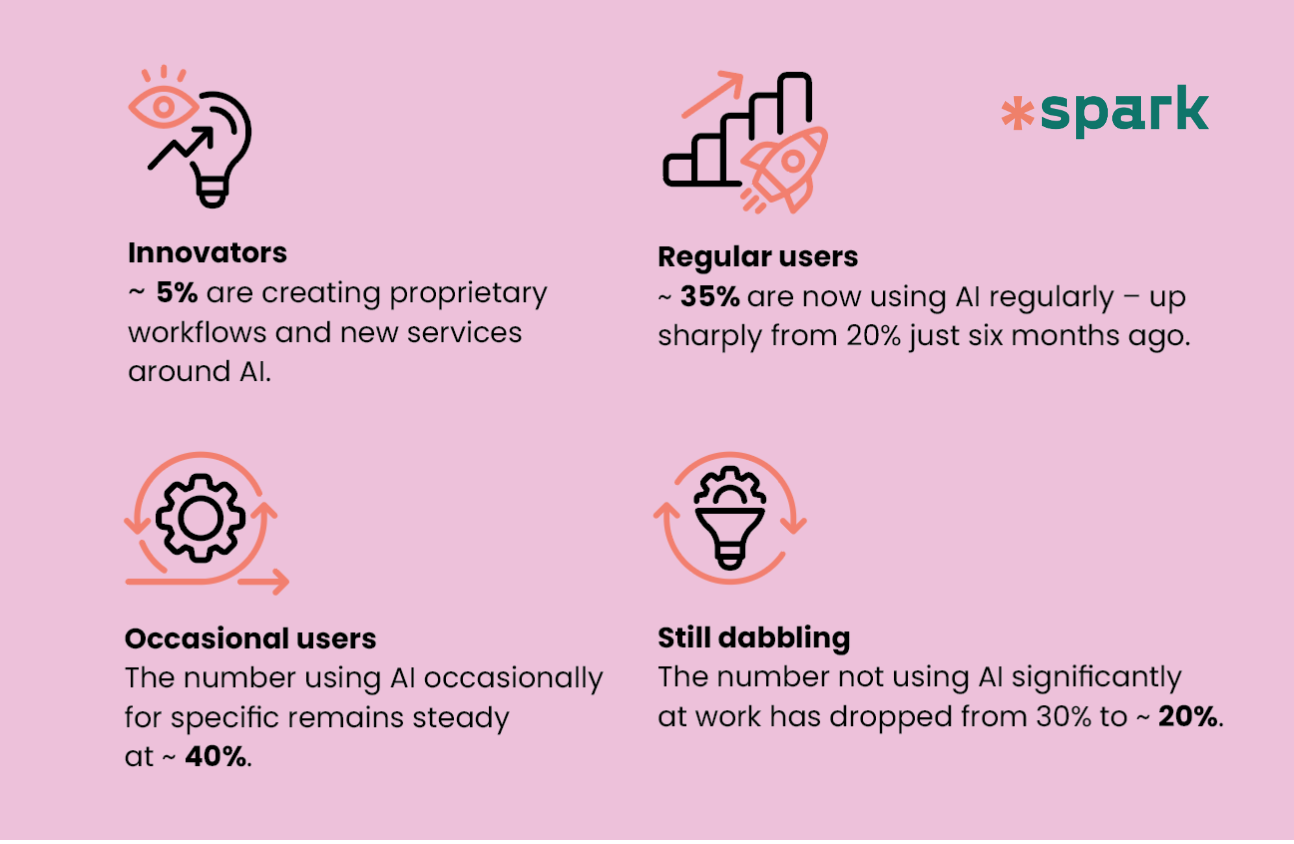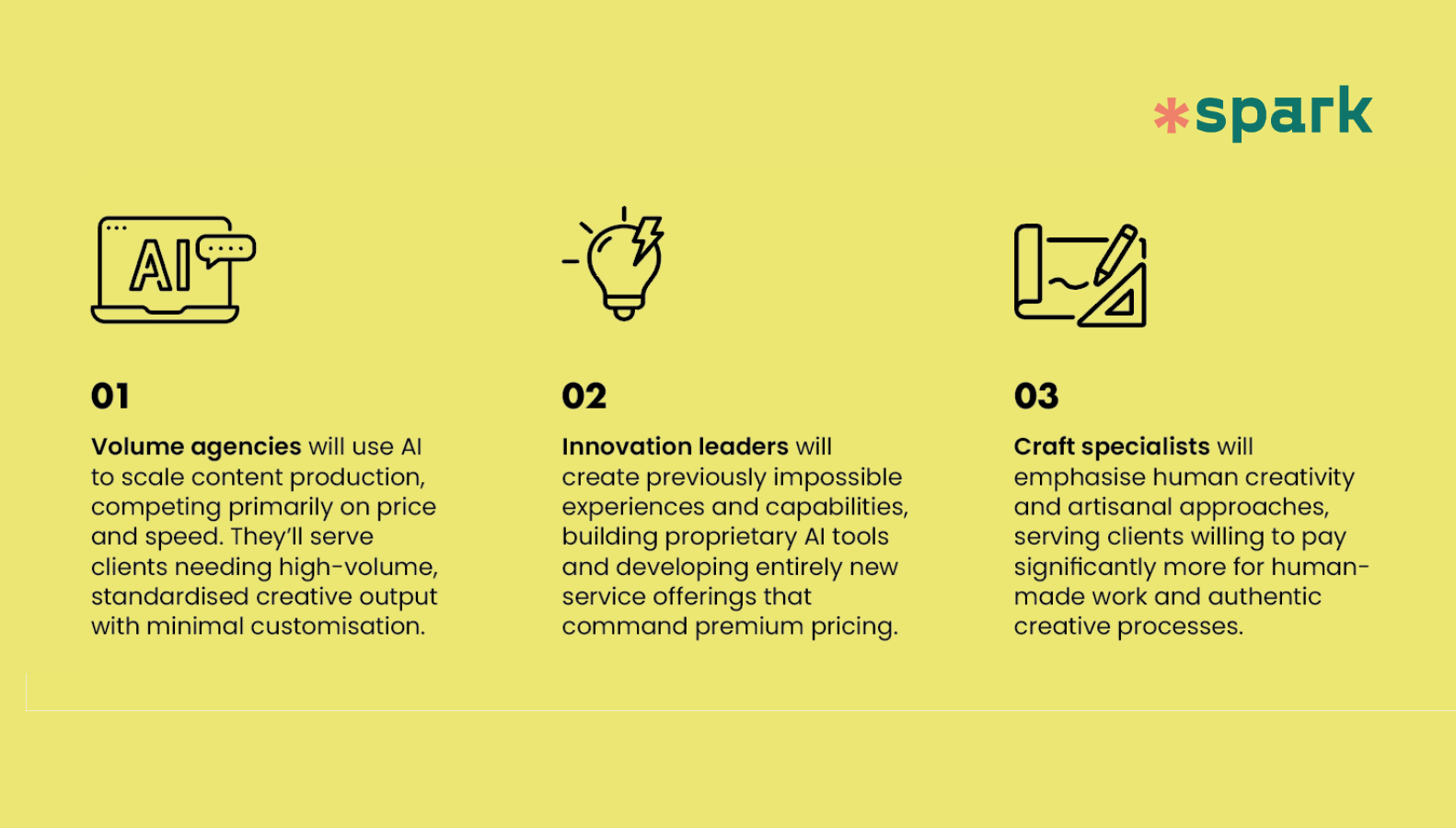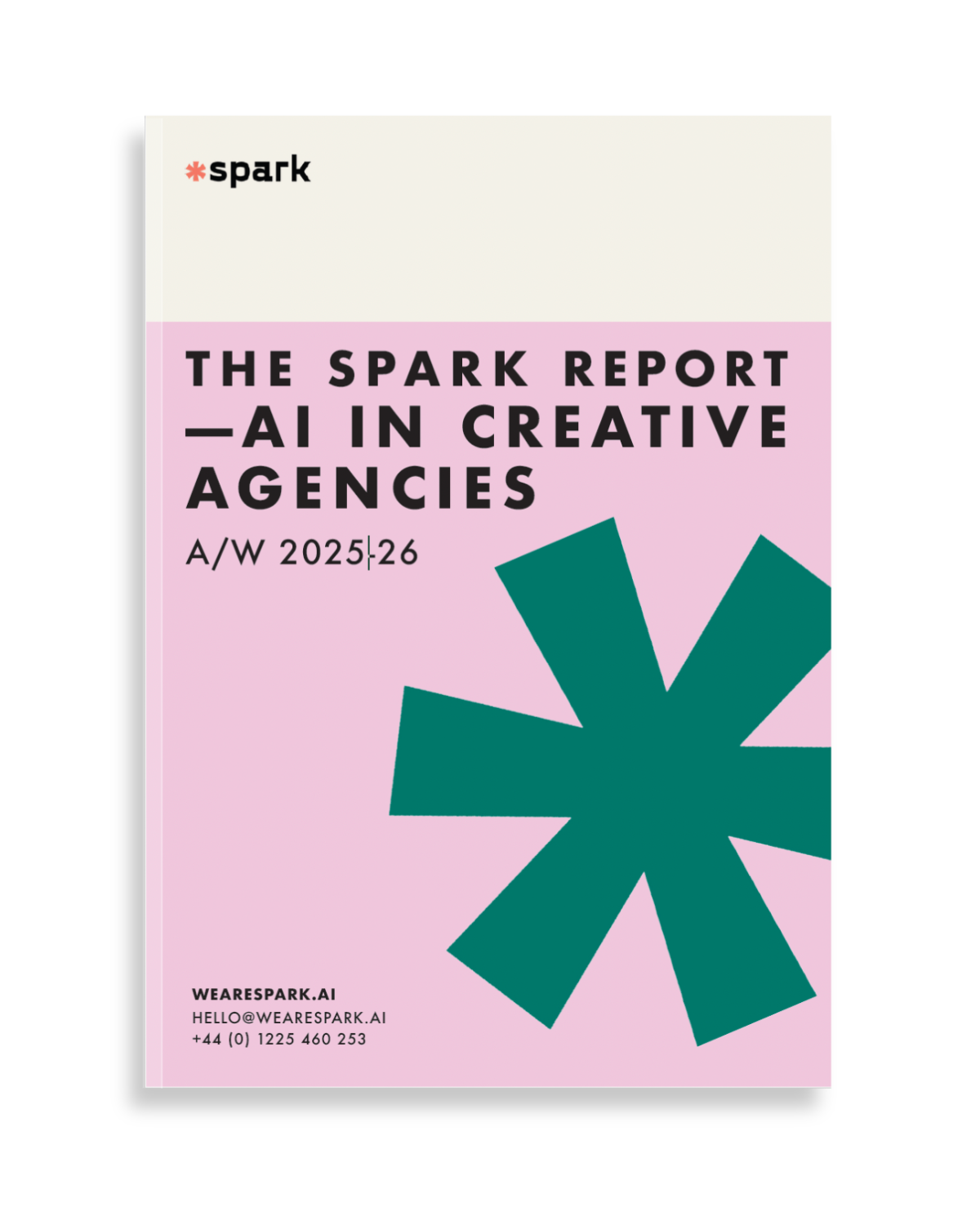Having just completed our third six-monthly benchmark on AI in creative agencies, I’m fascinated by what we’re seeing emerge across the industry. We spoke to 60+ agencies and did an extensive review of all the recent industry studies, and whilst we found that 80% of creative agencies now actively use AI, only approximately 5% are genuinely innovating with it – building proprietary IP, launching new services, and completely transforming how they work.

The conversation has definitely shifted since our last report in the spring of 2025. Six months ago, agencies were asking “Should we use AI?” Now it’s “How do we transform client value with AI?” But whilst the questions have evolved, most agencies still feel stuck in what we’re calling “the experimentation trap.”
Through our work with creative agency clients, we’ve identified a four-stage AI maturity model that the most successful agencies follow:
Experiment – scattered dabbling with various tools
Adopt – structured training and AI taskforces
Optimise – automation and reshaped roles
Innovate – proprietary tools and new client services
What we’re finding is that it’s really easy to get stuck between stages one and two. Meanwhile, the 5% who’ve reached stage four are building capabilities that genuinely set them apart.
Some of these innovation-stage agencies are doing remarkable things. Brave Bison’s AudienceGPT creates synthetic audiences with award-winning accuracy, effectively replacing traditional focus groups. Eight&Four has built Platform12, a complete proprietary ecosystem. OLIVER’s Seance achieves 85% correlation with human focus groups, whilst Monks.Flow reports 97% cost savings through agentic AI workflows.
One agency leader we spoke to put it perfectly: “AI hasn’t made our work cheaper, but it has made it better. Now we are exploring more territories, testing more ideas, and then refining them more.”
The barriers have shifted quite a bit since the first edition of this 6 monthly benchmark research 12 months ago. Early on, it was all about tool overwhelm – there were just too many options and people didn’t know where to start. Now it’s more fundamental: 43% cite lack of proper training, whilst 48% point to privacy and IP concerns.
The thing is, the ROI on structured training is genuinely compelling. Our research shows that just 4 hours of training can save each person 3-5 hours weekly. For a 50-person agency, that works out to 7,800-13,000 hours freed up annually – that’s huge.
Perhaps more telling is what happens when agencies get their governance right. Those with proper frameworks report 40% fewer client concerns, 60% more pricing confidence, and 80% stronger internal alignment. We’re seeing client conversations shift completely – from “Do you use AI?” to “What’s your governance framework?”
One of the most interesting shifts we’ve tracked is in expectations around AI’s role. 95% of agencies now expect AI to enhance creativity rather than simply improve efficiency, with 85% expecting higher quality outputs. That’s a massive change in mindset from simply focussing on doing things faster and cheaper.
The agencies that are succeeding are reinvesting any time they save through AI into exploration and strategy. Instead of producing one polished pitch, they’re analysing thousands of data points and exploring 20 concepts in a day.
On the employment side, we’re seeing role evolution rather than job displacement. Demand seems to be growing for creative problem-solving, emotional intelligence, and strategy, whilst completely new hybrid roles are emerging: AI creative directors, prompt engineers, and creative technologists.
Through our research, we’re seeing the early emergency three distinct competitive categories forming:

Pricing models are evolving too. The old “time × rate = fee” approach is giving way to “impact × expertise = value.” Some agencies like Dept are experimenting with hybrid retainers and revenue share, whilst others like Pod London are moving to efficiency-based pricing.
This research raises some interesting questions for creative agencies. As the ~5% continue to build proprietary capabilities that competitors can’t easily replicate, what happens to traditional agency partnerships? When volume production becomes AI-driven and innovation requires significant investment in new capabilities, where does this leave full-service agencies?
What we might be witnessing is the emergence of a new agency landscape – one where the winners aren’t necessarily the largest or most established, but those who’ve successfully transformed their business models for the AI era.
If our findings are accurate, this is the window for competitive advantage, but it won’t stay open forever. Agencies need to move beyond experimentation to systematic skill development, with proper governance frameworks and structured AI adoption programmes becoming key differentiators to enable real innovation.
What’s your take on all this? Do these findings match your experience of how agencies are approaching AI? Are you seeing this kind of divide, or does the reality feel different from where you sit?

The Spark Report: AI in Creative Agencies A/W 2025/26 is available to download and includes the full AI Maturity Model, detailed case studies, and practical frameworks for agencies looking to move beyond experimentation. Download The Spark Report.